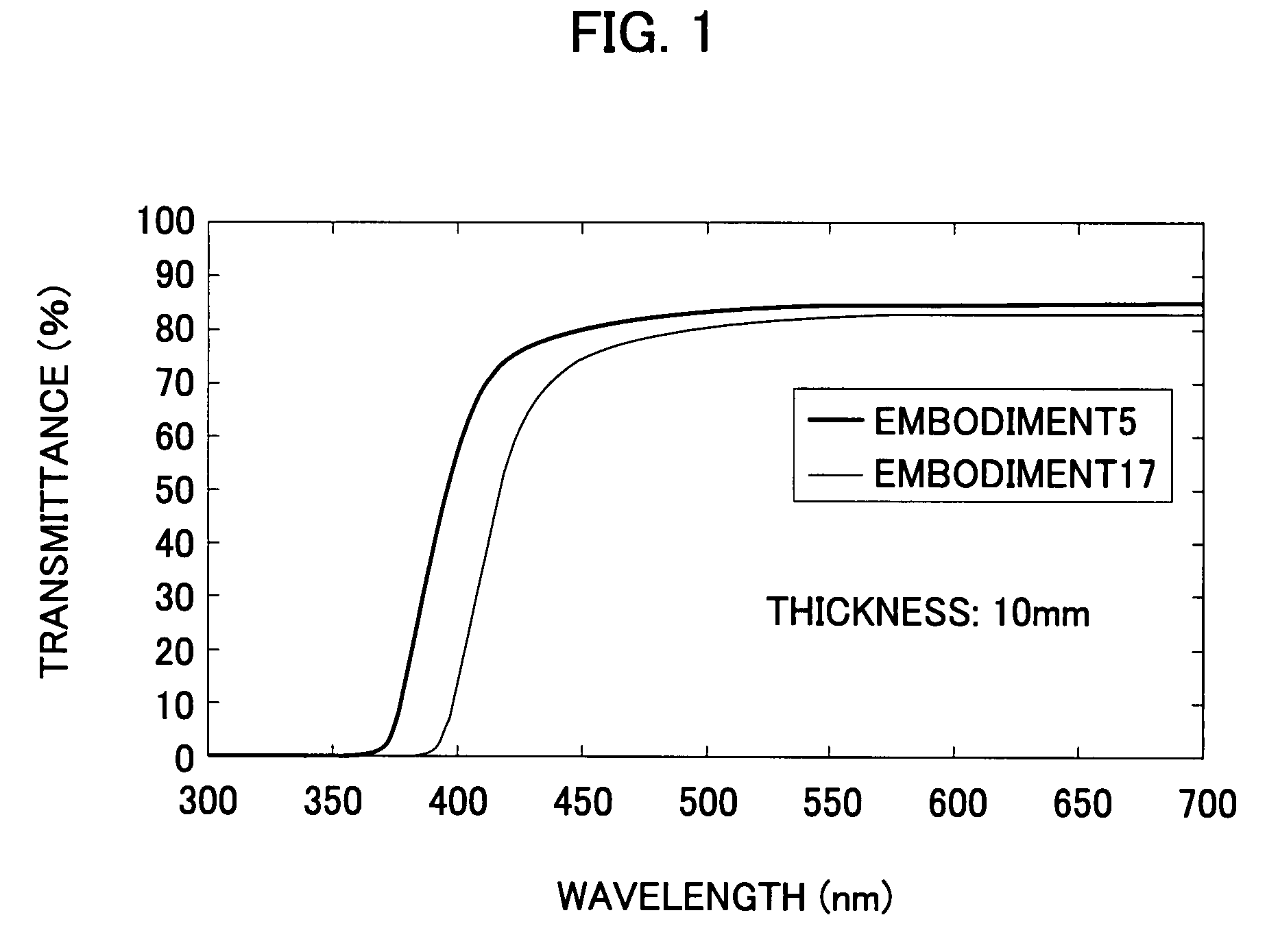Optical glass containing bismuth oxide
a technology of optical glass and bismuth oxide, applied in the field of optical glass, can solve the problems of low devitrification resistance, low devitrification resistance, and inability to maintain the precise face of molds
- Summary
- Abstract
- Description
- Claims
- Application Information
AI Technical Summary
Benefits of technology
Problems solved by technology
Method used
Image
Examples
embodiments
[0051]The optical glass of the present invention can be manufactured by the following method. Specifically, each starting material (oxide, carbonic acid salt, nitric acid salt, phosphoric acid salt, sulfuric acid salt, or the like) was weighed in a given amount. After mixing homogeneously, the mixture was placed in a quartz crucible, an alumina crucible, a gold crucible, a platinum crucible, a gold or platinum alloy crucible, an iridium crucible, or the like, and was melted in a melting furnace at 850 to 1250° C. for 2 to 10 hrs while stirring to permit homogenization. Thereafter, the temperature was lowered to a suitable point, and casting in a mold or the like was performed to obtain glass.
[0052]The present invention will be explained below by way of Embodiments; however, the present invention is not limited to these Embodiments.
[0053]The materials were weighed such that types of glass of 400 g having the predetermined compositions shown in Tables 1 to 4 were provided. After mixin...
PUM
| Property | Measurement | Unit |
|---|---|---|
| Abbe number | aaaaa | aaaaa |
| refractive index | aaaaa | aaaaa |
| thickness | aaaaa | aaaaa |
Abstract
Description
Claims
Application Information
 Login to View More
Login to View More - R&D
- Intellectual Property
- Life Sciences
- Materials
- Tech Scout
- Unparalleled Data Quality
- Higher Quality Content
- 60% Fewer Hallucinations
Browse by: Latest US Patents, China's latest patents, Technical Efficacy Thesaurus, Application Domain, Technology Topic, Popular Technical Reports.
© 2025 PatSnap. All rights reserved.Legal|Privacy policy|Modern Slavery Act Transparency Statement|Sitemap|About US| Contact US: help@patsnap.com


